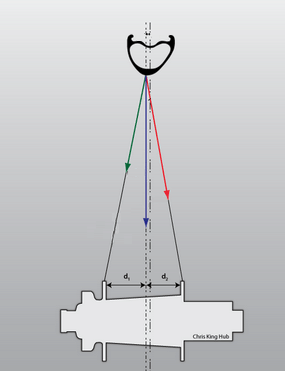What is the Difference between Asymmetric and Symmetric Bicycle Rims?
Many riders ask, what is the difference between asymmetric and the traditional symmetric bicycle rims? What are the advantages of an asymmetric wheel?
In conclusion, the spoke tension on two sides of an asymmetric wheel gets more balanced than a symmetric wheel, especially for the rear mountain bicycle wheel. The performance of an asymmetric wheel is better than a symmetric wheel.
Contrary to the standard symmetric rim design, where a rim has spoke holes positioned straight in the middle, spoke holes of asymmetric rims are offset from the center of the rim. As below, it's a drawing to show the assembly of an asymmetric bicycle wheel.

As we could see the rear hub, the distance of the non-drive side (left side) flange to the hub center is longer than the distance of the drive side (right side) flange to the hub center. When we build the wheels with spokes, usually the spoke tension on the right side is more tense than the spoke tension on the left side.
However, if we assemble the wheelset with an asymmetric rim, since the spoke holes are offset to the left side, the distance between the flanges on both sides and the center of the hub is closer, which results in the spoke tension on two sides of the wheels would be more balanced. With a balanced and high spoke tension on two sides of a wheel, the reaction of power transmission from the hubs to the rims will be faster, so that it improves the riding experience.